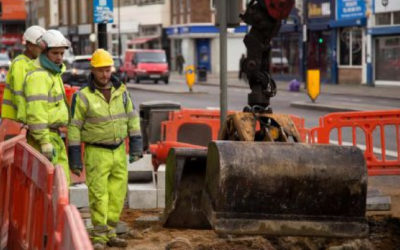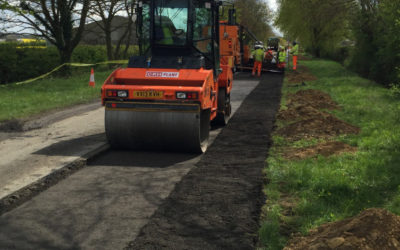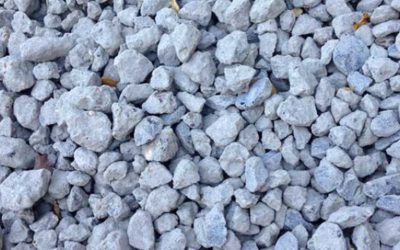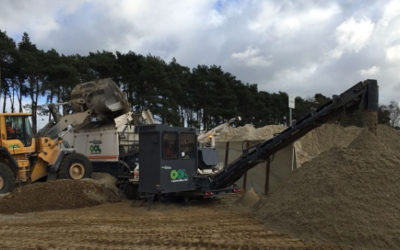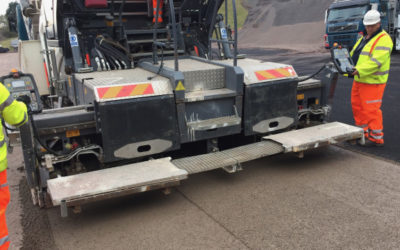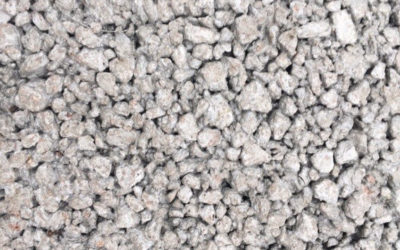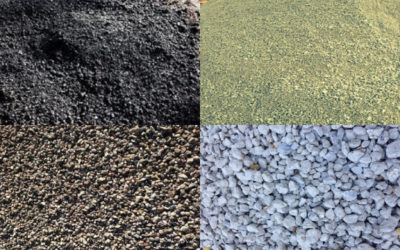Just over a year ago, National Highways, the government-backed private company charged with operating, maintaining and improving motorways and major A-roads across England, announced the creation of the new Environmental Sustainability division.
This new division was tasked with ensuring England’s motorways and A-roads achieve zero carbon targets by 2050, meet challenging targets to improve biodiversity and cultivate social benefits from roadbuilding and improvements whilst carrying out the UK government’s £27bn Road Investment Strategy 2 (RIS2); 2020-2025, and future work on RIS3 thereafter.
The creation of the Environmental Sustainability division signals the government’s commitment to promoting sustainability and reducing the carbon emissions across the UK-wide road infrastructure. Historically, UK-wide construction has had little choice but to build highways using materials and resources that, though efficient, cause damage to the environment.
However, by leveraging new materials like eco-friendly road aggregates, incorporating efficiency principals including lean construction, highways, hard standings such as car parks, even airport taxiways and runways can be constructed without polluting the environment with harmful emissions.
The Advent of New Construction Methods
The new Environmental Sustainability division highlights just how outdated materials and processes have become. This presents a larger problem. What of maintenance?
Building roads, car parks, indeed all the infrastructure required for national and international travel generates a significant amount of CO2 – and essential highway maintenance generates the same problem. Traditional construction and maintenance is simply not an option if the UK wants to meet its net zero targets. The biggest obstacle is likely wholesale sector-wide buy-in.
Now before we all start scratching our heads, unsure if getting everyone on-board is even possible, let’s remind ourselves that achieving net zero emissions across every UK council by 2030 is not a suggestion, it’s a directive. Businesses that persist in employing traditional materials and techniques are doing themselves a disservice. This is true of construction and maintenance.
Lean Construction
A broad philosophy that incorporates a range of approaches, tools and instrumental techniques, lean construction leverages lean thinking (a transformational framework that offers a new way to organise activities to deliver greater collective societal benefits whilst eliminating waste) whilst cultivating improved project delivery and efficiency to improve client and constructor needs.
In-line with this philosophy, anything which fails to add value to the operation (especially from the client’s viewpoint) is classed as waste and eliminated. Lean construction is a continuous process, one that transcends design, procurement, manufacture and construction. It’s a team effort, one that streamlines processes and is solely indicative of the alignment and holistic pursuit of concurrent and continuous improvement, therefore minimising cost and maximising value.
The Advent of New Technologies
It has been estimated that road construction emissions could be halved by just switching from traditional materials to innovative solutions. By leveraging recycled, sustainable building materials, construction businesses can make giant in-roads into not sabotaging your projects’ carbon emissions and meeting that vital net zero quota.
Recycled Aggregates
One approach to dealing with highways waste is ex situ recycling. This process involves the pre-treatment of crushing and screening of highways waste, with the resultant graded feed stock then being adopted in the ex situ mixing process. This results in a base and binder replacement in accordance with national standards. This recycling process entails encapsulating the contaminated arisings.
Usually, the materials are stabilised with the aid of binding agents. The national specifications oversee the quality control of CRBM and ensure the mixture design is achieved for permanent works to ensure the materials are fit for purpose.
Using recycled aggregates in highway construction offers several benefits. One advantage is sustainability, as it reduces the need for virgin aggregates and the associated energy consumption and carbon emissions that come with their production. It is a great example of the circular economy in construction; what comes out the ground goes back in. Another benefit is cost savings, as recycling aggregates can be cheaper than purchasing new materials, especially when transportation and disposal costs are considered. Additionally, using recycled materials reduces landfill waste, which helps to extend their lifespan and decrease the environmental impact of waste disposal. Recycled aggregates can offer comparable or better performance than virgin aggregates and can be used in a variety of applications, including road sub-bases, embankments, and drainage systems. And makes them ideal, not only for road construction but for car parks, ports and even airports and runways.
Lastly, recycling aggregates can create local jobs and support the development of a circular economy by reducing the dependence on raw materials and increasing the use of locally sourced materials.
Cold Recycled Bound Material (CRBM)
In the last 20 years, a variety of methods have emerged in the UK that enable the repurposing of traditional road materials such as concrete and asphalt in both new road construction and maintenance. The impetus behind these techniques is a push for greater sustainability in road building, as they reduce the need for virgin aggregates, lower energy consumption, minimise waste disposal, decrease transportation emissions, and lessen environmental impacts.
The process of creating cold recycled bound material (CRBM) involves milling the arisings from the road and transporting them to a plant. There, the material is crushed, screened, and combined with appropriate binding agents under regulated conditions. CRBM is manufactured in accordance with SHW CL.948 and BS9228 and offers circular options to the manufacturer of base and binder course.
The resulting recycled material is transported back to the road site and applied using a conventional paver. Depending on the design of the scheme, a new surface course and potentially a binder course may be necessary. To ensure the material can be placed and compacted within the required timeframe, the plant must be located nearby. The selection of a suitable compound for the plant is crucial, as it should have a hard-standing area and allow for safe heavy vehicle access.
This method offers improved control over the materials used in the pavement, reducing the risk of not achieving the desired stiffnesses. Additionally, the recycled material is typically applied in thinner layers compared to traditional methods.
The application of the recycled material does not require specialised insulated trucks, as it is laid cold. The benefits of this are real; not only does this eliminate waste resulting from unused material, but overall, compared to traditional materials, the cold recycled road surface utilises only one-fifth of the energy and reduces CO2 emissions by a staggering 50 percent.
Road Building Generates C02 Emissions
What’s clear is that the traditional, longstanding way of building roads generates significant carbon emissions from a wealth of direct and indirect sources. It’s easy to overlook it, but there’s so much more than just laying asphalt when building roads that generate CO2 emissions. From land preparation, carbon embodied in concrete to using roadside lighting and tree felling which reduces carbon capture, to the direct CO2 emissions from construction vehicles. While some firms will use electric powered vehicles, the reality is that they are using electricity from the grid which still has to be generated for them to run. Without delving into tailpipe politics further, it is fair to say there’s much more to consider than merely the obvious, visible examples of CO2 emissions.
Let’s not also forget that evidence suggests that road schemes generally induce more traffic by enabling more carbon emitting and car-dependent activities, land development, even the use of freight transportation and running onsite commercial operations from the aforementioned commercial buildings.
Then there’s the point that often roads are built in areas that are somewhat inaccessible, meaning that vehicles will travel to and from location daily all the while pumping noxious CO2 and other fumes into the atmosphere.
Traditional operations are, without question, carbon rich. This is the direct result of how we power our transport and machinery. But can modern innovation mitigate such pollutants? In short, yes. When the right products and processes are leveraged.
Pledges Made by the RIS2 Delivery Plan
Reducing or offsetting carbon emissions across myriad road building projects can easily be achieved – through specific measures. These are outlined by pledges made by the RIS2 Delivery Plan and are as follows:
- Using ultra-low emission or electric vehicles for all maintenance and support work
- Reducing the use of carbon intensive equipment throughout road renewal work
- Incorporating emissions standards into supplier contracts
- Illuminating roadside tunnels, roadsides and signage with energy efficient lighting
- Planting trees to capture carbon near major projects
RIS2 and Delivery Plan also leverage energy efficiency principles, such as digital design, off-site manufacturing and lean construction which identifies values imperative to customers, eliminates waste, drives immediate and apparent change, keeps the environment clean and safe, whilst focusing on continuous improvement all of which greatly reduces environmental impact.
But more than that, RIS2 is committed to exploiting new thinking and technology whilst making sure that environmental considerations are firmly at the forefront of all thinking. In addition to leveraging environmentally friendly materials, such as recycled and graphene-advanced and recycled asphalt, across stretches of the UK’s strategic road networks, RIS2 supports active travel and public transport initiatives encouraging alternative low or zero carbon transport options, including zero emissions bus and coach services.
There’s also the option of adopting a Pay as You Go (PAYG) model on England’s busiest roads. This could reduce congestion, incentivise modal shift and generate sustainable revenue for road maintenance and upgrade.
Are You Ready for a Net Zero Future?
While traditional materials have been ubiquitous in the construction industry for many years, it has only been in recent times that their impact on the environment has come to light. Although the adoption of sustainable construction materials and techniques has accelerated in recent years, the fact remains that investing in traditional materials for construction and maintenance can hinder the efforts of construction companies to reduce carbon emissions.
Achieving a net zero economy is no longer optional but rather a necessity, and the time to adapt to sustainable alternatives is now.

